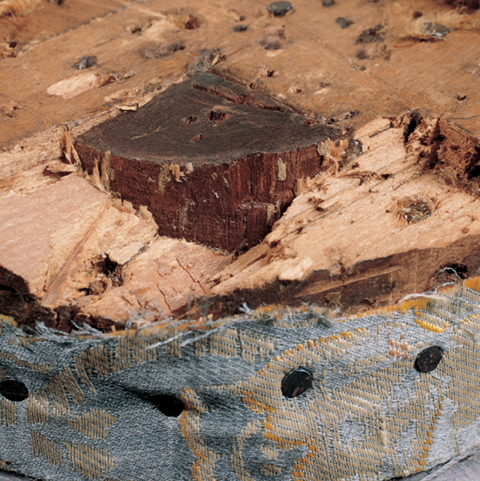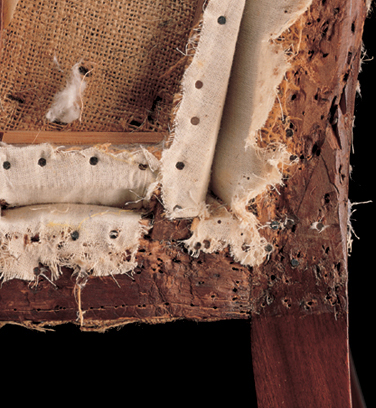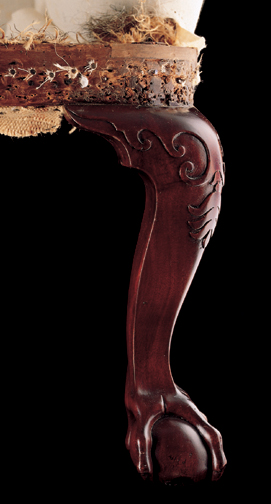Colored or chemically
altered surfaces
The faker stained the quarter-round tenons, which connect the legs to the front seat rail, in an effort to make them look old. But their color and character differ significantly from those on period examples like the Boston easy chair to the left.
Lack of wear
Even the most carefully preserved antique furniture has scratches and nicks acquired over centuries of use. On this chair, the front legs show virtually no evidence of wear or damage.
Historically inaccurate
construction methods
The original rear legs on this chair were probably extensions of the back posts like those on the authentic Boston easy chair. There is no way these spliced joints could be interpreted as original construction, even though the Stones received assurances that there were no major replacements or restorations on the chair.






